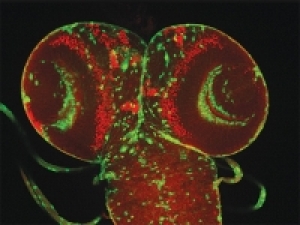
Jeff Hansen
| This email address is being protected from spambots. You need JavaScript enabled to view it.
A 90-ton machine called a cyclotron will accelerate protons to very high speeds to impact human tumors.
The function and structure of protein GARP2 in rod cells of the retina is still not clear, but researchers have shown that GARP2 accelerates retinal degeneration in mice, and have made an important step toward creating a standardized nomenclature between mice and humans for a measurement of retinal degeneration.
Tuberculosis kills 1.8 million people a year, and 10 million more are infected. Development of host-cell directed therapies that could restore cellular function during M. tuberculosis infection, such as a “release and kill” strategy, could shorten drug treatment of TB patients.
It appears that new cells compete to ‘win’ synapse connections away from old cells, which promotes network plasticity.
Abnormal antibody production that allows inflammation leading to AIDS is detected by analysis of antibodies in gut fluid of HIV-1-infected people.
Cardiac muscle patches in this proof-of-concept research may represent an important step toward the clinical use of 3-D-printing technology, as researchers have grown heart tissue by seeding a mix of human cells onto a 1-micron-resolution scaffold made with a 3-D printer.
This study shows how stress blocks the release of an anti-anxiety neuropeptide in the brain, and it could pave the way for new therapeutic targets for PTSD.
The clinical lab in Spain Tower analyzes up to 5,000 tubes of blood each night, providing vital data for caregivers and patients in the nation’s third-largest public hospital.
This rapidly fatal brain cancer has seen only two improvements in therapy in 30 years, and research findings are pointing toward a unique new human clinical trial in 2017.









